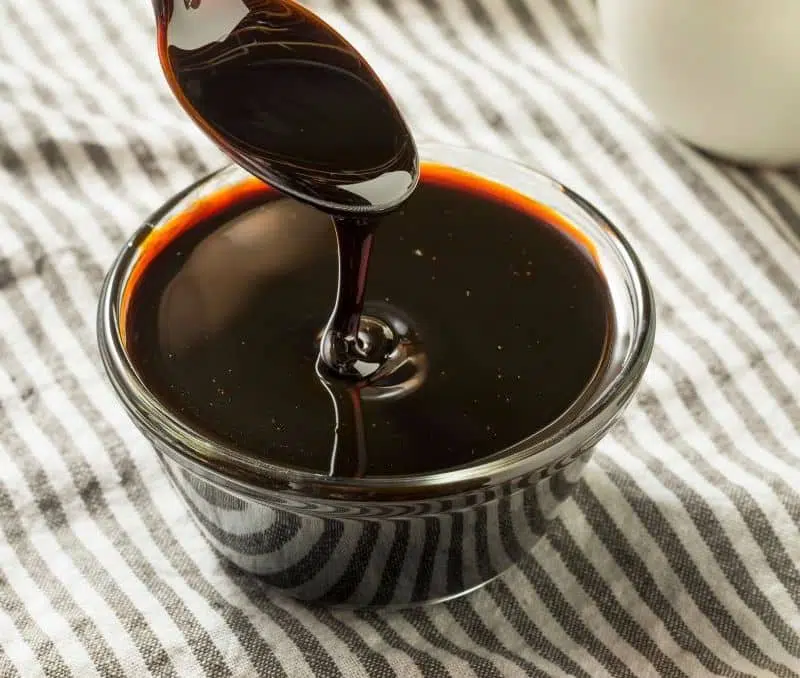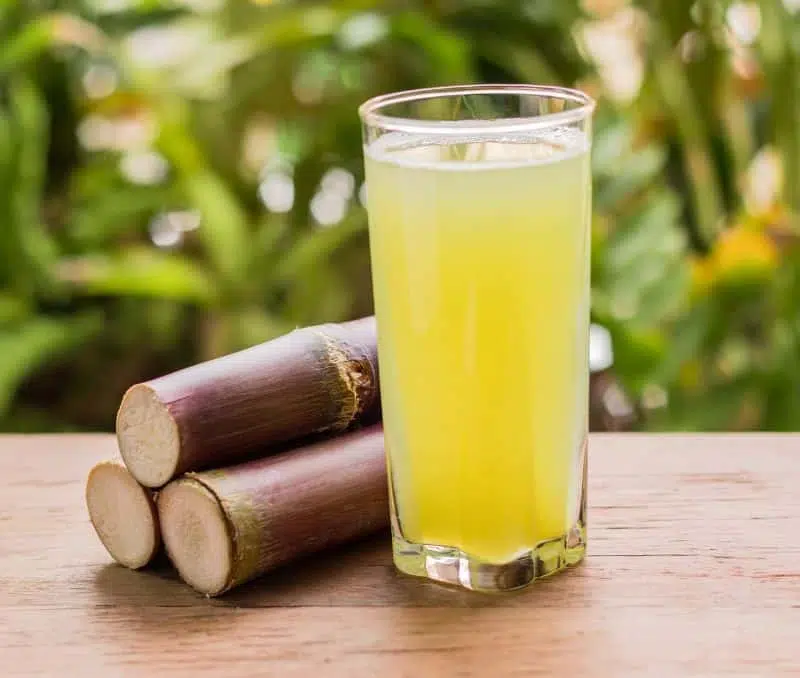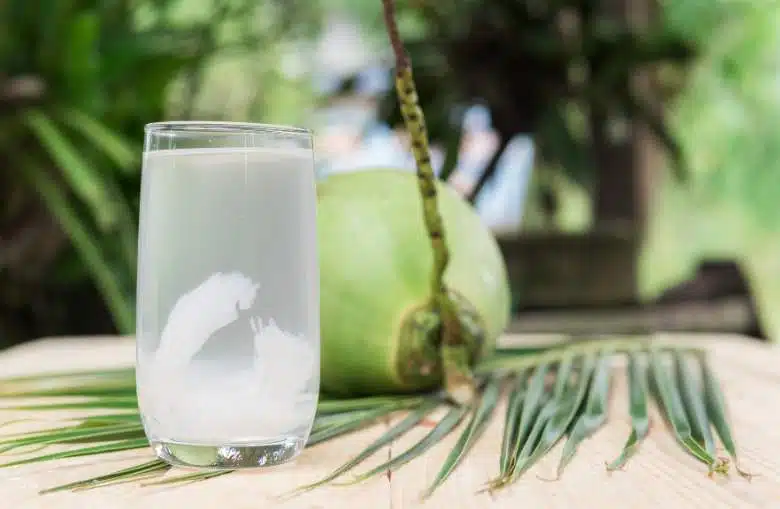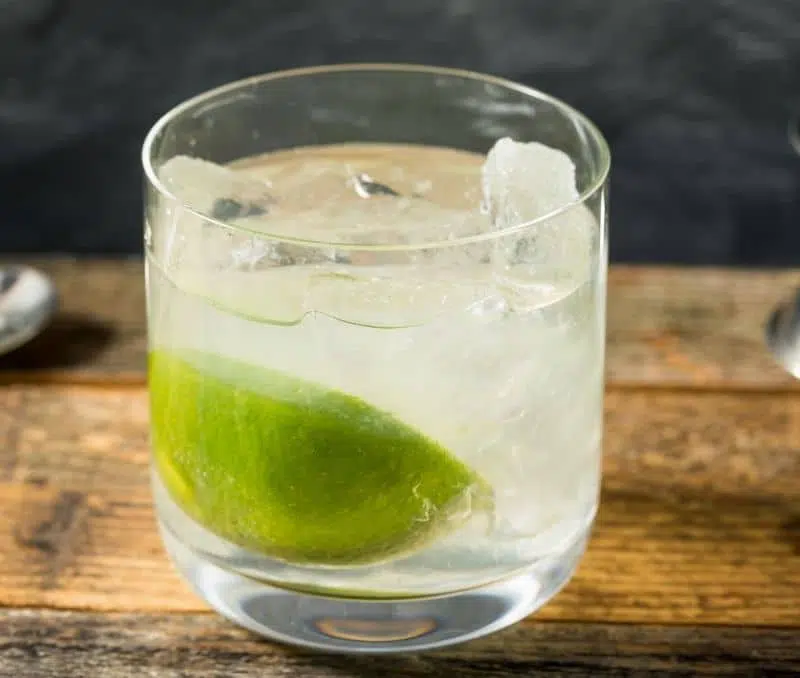From tropical tiki cocktails to poolside sipping, there's no other spirit in mixology transporting you into the tropics like rum does. The alcohol content of rum ranges from 40% up to a whopping 75.5% ABV. Always made from sugar cane, the spirit is diverse in many ways.
There's white rum, gold rum, dark rum, and black rum. There are unaged and aged rums, spiced rums, and blended rums made with a solera process. Some are based on fermented sugar cane juices, whereas the majority are based on molasses. Even the stills vary as some producers use column stills, others pot stills, and some even a combination of both.
So, here's our ultimate guide to rum. Learn everything about the different types of rum, what rum is, how it tastes, how the spirit is made, and which rums we recommend adding to your home bar.
Rum Fact Sheet
- Spirit base: Sugarcane (molasses or juice)
- ABV: 40% to 75.5%
- Proof: 80 to 151
- Calories per ounce: 64 to 122
- Origin: Latin America & Caribbean
- Where is it produced: Rum can be produced anywhere in the world. However, the majority is from Caribbean nations like Jamaica, Trinidad & Tobago, Cuba, Guyana (Demerara Rum), and Barbados.
- Color: transparent (unaged), light golden (aged), Dark (aged for a long time or added coloring)
- Popular rum brands: Zacapa, Bacardi, Appleton, Barbancourt, Havana Club, Don Papa, Mount Gay
- Famous rum cocktails: Daiquiri, Mojito, Dark 'n Stormy, Mai Tai, Cuba Libre
- Best served: neat (aged rum) or in cocktails (all types)
What is Rum?

Rum is a distilled spirit made from sugarcane juice or molasses with an alcohol content of 40% up to 75.5% (80 to 151 proof). Rum has between 64 to 122 calories per ounce (depending on alcohol content) and is available in different styles and types, from unaged white rum to black rum.
To produce the sugarcane liquor, these ingredients are first fermented and then distilled. Unaged white rum is bottled straight after distillation. Other types such as gold or dark rum, mature in oak barrels before bottling.
The majority of rum is produced in the Caribbean, though the roots of the popular sugarcane liquor most likely lie in Brazil.
Types of Rum

The spirit made from sugar cane is available in many styles and types with different production processes, base ingredients, and flavors. Here's an overview of the different rum types:
- White Rum: White rum is often unaged and has a crisp and clean taste. In rare cases, this type is aged and charcoal is filtered to remove the dark color.
- Gold Rum: Gold rum is typically aged for a short time and often contains additional caramel coloring to get a perfect golden color. The flavor profile is medium, somewhere between unaged white rum and aged rum.
- Dark Rum: Dark rum, first and foremost, refers to its dark color. That can be due to extended aging, but also due to added caramel or artificial colorings.
- Black Rum: This rum type is made from molasses and has a very dark, almost black color and a thick consistency with a sweet, molasses-forward taste.
- Aged Rum: Rum aged for an extended period in wooden barrels and obtained a dark color naturally. This type has the most developed flavor profile and is typically drank neat or on the rocks.
- Rhum Agricole: Rhum Agricole is a sub-type of rum made from sugarcane juice. Most popular in the French-speaking part of the Caribbean, the main islands producing Rhum are Martinique, Haiti, and Guadeloupe.
- Cachaça: Brazil's national spirit and then for making a tasty Caipirinha cocktail. Cachaça is the predecessor of rum as we know it today.
- Navy Rum: Navy strength or Naval rum typically contains between 50% and 60% alcohol by volume. The name is coming from the rum rations the British Navy used to grant its sailors.
- Spiced Rum: Spiced rum has added spices like pepper, cinnamon, bay leaf, vanilla, anise, and more. Sometimes, this type also uses natural or artificial coloring to obtain a darker shade of brown.
- Overproof Rum: Overproof rum contains more than 60% of alcohol. A specific subtype of this category is 151 Rum which clocks in at 75.5% ABV and is used in tiki cocktails for fire effects.
- Aguardiente: Aguardente or aguardiente is a distilled spirit with an alcohol content of 29 to 60%. It's also made from sugarcane, so it is closely related to rum.
Here's a more in-depth guide to those different rum types.
What is Rum Made From?
All rum is made from sugarcane. The sugarcane plant originated in Asia, reached Portugal in the 1400s, and was brought to the Caribbean by Christopher Columbus.

The majority of rum is produced from molasses, around 95% of all rum, to be precise. That includes the most popular types like white rum, dark rum, black rum, and aged rum.
The other 5% are made directly from sugarcane juice, like rhum. The term "rhum" typically refers to rhum agricole, made from sugarcane juice, especially in French Caribbean regions like Martinique.
Another type of rum made from sugarcane juice is Cachaça. This Brazilian spirit produced from sugarcane juice is treated as a separate spirit in Brazil. However, in the United States, it is treated as a type of rum.
Where is Rum Produced?
Rum is predominantly produced in the Caribbean, often considered its true home. It's crafted in various countries and territories across the Caribbean, including Puerto Rico, Jamaica, Antigua and Barbuda, Barbados, the Dominican Republic, Grenada, Haiti, St. Lucia, Trinidad & Tobago, and more.
Central and South American regions also contribute to rum production. Especially countries like Guatemala, Mexico, Brazil, and Colombia are known for producing high-quality rum. In the United States, several craft distilleries produce rum, echoing a colonial tradition when sugarcane liquor was a primary spirit.
But not only the Americas produce rum. There are quality rum brands all over the world. One of these new craft rum brands is Don Papa, which produces rum in the Philippines.
Like other spirits, the region influences the flavor of the spirit. Factors such as the type of sugarcane and the climate play a role, resulting in distinctive regional styles, just as Islay is known for smoky Scotch and terroir matters in wine. This diversity in production regions contributes to rum's rich array of flavors and profiles.
History
Brazil's national spirit, Cachaça, is the predecessor of rum. A short time after the Portuguese brought sugar cane to Brazil, slaves that harvested and processed sugar cane started making Cachaça.
There aren't many reliable sources, but most likely, in 1532, the first Cachaça was distilled in Brazil. This date also marks the first time a spirit was distilled in Latin America.
From there, sugar cane and the distillation process traveled to other countries, including the Caribbean. Experts and historians still don't fully agree on where rum, as we know it today, was first distilled. But chances are that Barbados was the first Caribbean island in the mid-1600s.
About 50 years later, The first well-documented rum production in Barbados took place in 1703. Mount Gay Rum, the company that produced this rum, is still active today and is a famous brand among rum lovers.
In the 1700s, rum and molasses became Britain's main trade income. They set up the Triangle Trade. Caribbean molasses went to New England, where it turned into traditional rum. This rum was then traded to West Africa in exchange for more black slaves. These slaves were transported to the Caribbean to work on cane plantations, and the cycle repeated.
Taste
The taste of rum depends heavily on the type and the brand. An unaged white rum is a light-bodied spirit with a crisp, fresh, and only slightly sweet taste.
Aged bottles, on the other hand, often have a heavier, sweeter, more full-bodied, and rich taste with oaky notes and hints of vanilla. The taste of Rhum agricole, again, is very different from the better-known white and dark rum. It tastes much more vegetal and grassy with earthy notes.

Unaged Cachaça often tastes like a cross between an unaged white Rum and Rhum. It's sweet but has these typical funky and grassy notes of Rhum.
How Rum is Made

Although rum varies significantly in aroma, taste, and production methods, they all have one thing in common: the sugar cane and a basic concept of production all Rums follow.
- 1. Ingredients: You need either sugar cane juice or molasses.
- 2. Fermentation: Producers add yeast and water to the sugar cane to initiate fermentation. This fermentation process breaks down the sugar into alcohol. This process can take anywhere between one day and three weeks. Ultimately, the duration depends on the yeast used and the style of the rum. After this step, we have a low-ABVsugar cane spirit.
- 3. Distillation: The mash resulting from the fermentation process is distilled to get a product of higher alcohol content. For this, the mixture is heated and condensed with either a column still or a pot still. The choice of still also affects the final taste of the spirit.
- 4. Aging (optional): The last step is aging. Not all types of rum are aged, but many of them are. Unaged Rum or Cachaça tends to be quite crisp and harsh. Aging in wooden barrels softens those notes, develops flavor, and adds the characteristic wooden aroma along with hints of vanilla. As a rule of thumb, the longer a rum ages in a barrel, the more elaborate and soft the taste.
Factors That Affect the Quality & Taste of Rum
Even within one type of rum, the flavors differ from product to product because so many aspects influence the final taste of a spirit. The following factors play a vital role in the taste and quality of the sugarcane spirit:
- Sugarcane: The origin of the sugarcane has a subtle impact on the final spirit. Just like with Mezcal or grain spirits like Whiskey, the terroir shows in the final product with taste nuances.
- Base ingredient: Whether a rum is made from molasses or fermented sugarcane juice has a drastic impact on the taste. The latter has a much more grassy and vegetal taste, whereas molasses rum is significantly sweeter.
- Barrels: Depending on the wooden barrels used for aging rum, the spirit can vary in taste. Standard rum uses ex-bourbon barrels, while some others use former sherry casks and part casks that impart a delicate sweet flavor to the spirit.
- Yeast: This may sound made up, but every brand uses a special type of yeast. That yeast leads to a different fermentation process, which ultimately shows in the taste of the final rum.
- Still: Copper pot stills, modern pot stills, and column stills are all used for rum production. Some brands use only one type of still, while others combine both types. In the end, this also affects the taste as copper pot stills create a more aromatic and flavorful spirit. Rum made from column stills is cleaner with a crisper taste and fewer flavors.
- Time of aging: This is a no-brainer. The longer aged rum spends in a barrel, the more mellow and complex the flavors of the resulting rum. If a brand uses a solera process for aging rum, this also heavily impacts the taste and complexity of the spirit. In a solera system, the distiller blends rums in set intervals according to a specified system (solera system). This results in a more uniform quality of the resulting rum.
If you change just one of these things, it will affect the taste and quality of the resulting product.
Best Mixer for Rum

The spirit works great in combination with a single mixer. Here's an overview of the best mixers to pair with rum:
- Coke: Rum blends perfectly with the sweet flavor of Coke in a delicious Rum & Coke Highball. It's also the base for one of the most famous Cuban rum cocktails, the Cuba Libre.
- Ginger beer: The combination of spicy ginger beer and rum works excellent in drinks like Dark 'N Stormy. This combination works best with sweet, dark rums but occasionally also works with other types.
- Coconut water: Rum and coconut is a match made in heaven. Try a combination of Plantation pineapple with coconut water for a refreshing, sweet, and tropical drink.
- Coffee: Pour a bit of dark rum into warm coffee to get through a tough Monday morning. The bitter flavors of coffee work well with the sweet and mellow taste of aged rum.
- Soda water: The combination of white rum and soda water is the rum version of a Skinny Bitch cocktail. It's refreshing, light, and low in calories.
How to Drink Rum
The best way to drink rum depends on the type. Aged premium Rum is best to sip neat or on the rocks. White Rum is best for bright cocktail recipes like the Daiquiri or Mojito, and dark rum works best in sweet and spicy mixed drinks.
Other types, especially the unaged ones, are best enjoyed in cocktails. Cachaça, for example, is key to a perfect Caipirinha, Rhum is great in a Ti' Punch, and spiced rum works in these drinks with spiced rum.
Popular Rum Cocktails

Rum is the main ingredient in many classic cocktail recipes, from Cuban drinks to Caribbean creations to Tiki cocktails. Here's a quick overview of the best rum cocktails.
- Daiquiri: Rum and lime juice are the keys to making a tasty Daiquiri cocktail. For a fruity twist, add fruity ingredients like strawberries to make a Strawberry Daiquiri. Check out our tasting to find the best rum for making a Daiquiri.
- Mojito: Crisp white rum, lime juice, simple syrup, mint leaves, and soda water are the ingredients for this classic Cuban cocktail. A float of Angostura bitters makes for some extra complexity. If you need recommendations read our guide to the best rum in Mojito cocktails.
- Mai Tai: One of the most famous tiki cocktails, the Mai Tai uses rum, lime, orange liqueur, and orgeat syrup. Add the ingredients into a shaker with crushed ice, shake for 2-3 seconds, and dump the whole content into a rocks glass. Add more crushed ice and a float of dark rum.
- Dark 'n Stormy: Dark rum, ginger beer, and lime juice are the ingredients for making this drink. Built It in a Highball glass and garnish it with a wedge of lime. Legally, the rum has to be Gosling's Black Seal rum to be called a Dark 'N Stormy, but other brands work just fine, and no one will sue you in your home bar.
- Piña Colada: The creamy tropical cocktail made of white rum, cream of coconut, pineapple juice, and lime juice is best when blended with ice cubes and floated with dark rum.
- Ti' Punch: The most popular rhum cocktail made with rhum agricole, lime juice, and sugar cane syrup.
Rum Recommendations

Best White Rum
- Clairin Sajous: This white rum agricole has excellent sweet and savory flavors and works great as a sipper and in cocktail recipes.
- Rum-Bar White Overproof Jamaica Pot Still Rum: This is a bottle for rum experts at an affordable price point. It's among the best Jamaican white overproof rums, an excellent sipper with plenty of flavors, and an excellent split-base rum for cocktails.
- Plantation 3 Stars: This exceptional rum works excellently in almost every white rum cocktail. It also works great for sipping and comes at a very affordable price.
Best Aged Rum
We are not listing the super-expensive aged bottles that sell for hundreds or thousands of dollars. We try to keep this list affordable with excellent aged rums at comparably low price points.
- Diplomatico Reserva Exclusiva: Diplomatico Reserva is one of the most popular aged rums, both for mixing drinks and sipping. This molasses-based rum is distilled in copper pot stills and ages in oak barrels for 12 years to fully mature.
- Ron Zacapa 23: Produced in the highlands of Guatemala, fermented sugarcane juice is the base for the spirit. Zacapa 23 ages in Ron Zacapa's famous solera system for up to 23 years.
- Plantation XO 20th Anniversary: This delicious aged Barbadian rum uses a combination of pot-still and column-stills for distillation. The spirit ages for 12 to 20 years in ex-bourbon barrels and is then shipped to France to age for another 12 to 18 months.
Best Spiced Rum
- Chairman's Reserve spiced rum: Spiced rum has a bad reputation, but this juice is different. Fine aging, excellent spice mix, and a great rum base. Certainly one of the best, if not the best, spiced rum on the market.
- Rumbullion Spiced: Another contender for the title "best spiced rum" is Rumbullion. The liquor is sweet, perfectly spiced, and excellent as a sipper and in mixed drink recipes.
- Kraken: Probably the best-spiced rum for a low budget. Coming from Trinidad and Tobago, Kraken was launched in 2010 and uses a secret spice mix containing 11 ingredients.
Best Rhum Agricole
- La Favorite La Flibuste: If you don't like rhum agricole, you've probably not tried this bottle yet. La Favorite La Flibuste is one of the best aged spirits I ever tasted; across all categories. It carries the typical rhum notes but has an overall sweeter taste with plenty of flavors like fine wine, hints of cognac, prunes, licorice, spices, and sugar cane. A must-try agricole!
- Rhum Clement XO - 6 year: Another excellent aged rhum agricole. This XO from Rhum Clement is not a flavor bomb like many other rums. Instead, it carries a very subtle flavor with a smooth taste and long burn.
- Neisson Blanc 50: This unaged white rhum of 50% alcohol is a perfect bottle for a Ti' Punch. The flavor profile is bright, floral, and fruity, with hints of lime, lemon, strawberries, and sugarcane.
Best Rum for Mixing
- Plantation 3 Stars: The second time, we recommend this bottle. It's simply an outstanding bottle of unaged rum that's perfect for any occasion and comes at a low price point. Plantation 3 Stars is a must-have in any home bar.
- Appleton Single Estate: This 8-year-old Reserve rum is perfect for mixing with ginger ale and Angostura bitters in Dark 'N Stormy. However, it also works great in other rum drinks and lends the cocktails a complex flavor.
- Mount Gay Eclipse: Mount Gay offers excellent unaged and aged rums for mixing drinks. Their Silver and Eclipse bottles are solid options to add to your home bar.
Best Rum for Sipping
- Zafra Master Reserve 30-Year: This expensive bottle is best for rum lovers. Despite its high price point, it's worth every penny as this is one of the best rums you can buy for sipping. At $170, it's certainly not cheap but also far from the price point of similar bottles that cost $1,000 upwards.
- Zacapa XO: The XO bottle from Zacapa is one of my favorite bottles in the $100 price range. It's a super smooth sipping rum, aging between 6 and 25 years in a solera system.
- Don Papa 10 years: I love the Don Papa brand. The rum brand from the Philippines produces excellent rum with unusual taste and bold, sweet flavors. My favorite bottle is their 10-year-old rum. It's super easy to sip and has sweet, bold flavors that make it perfect for beginners and rum connoisseurs.

